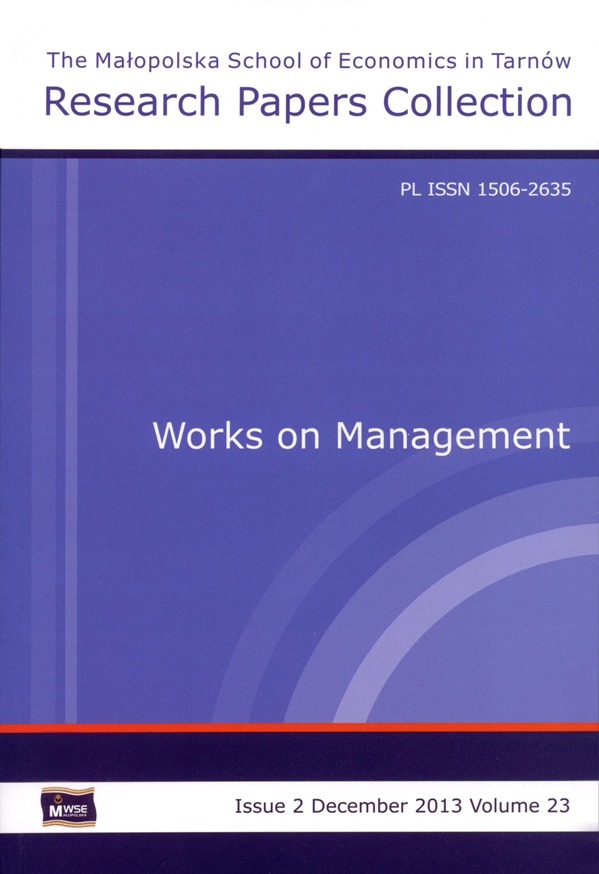Abstract
Social media and social networks conquer with surprisingly increasing rhythms more and more users and that is why they are implemented by many companies. The aim of this paper is to provide explanations of the term ‘social media’, their most widely accepted presentation, their use from the perspective of advertising and their effectiveness, with special emphasis on Facebook. An important goal of this paper is the presentation of innovative ideas important to the advertising market in an attempt to more fully attract potential customers with the use of new technologies. The article aims to present the way social media networks may be employed from companies and the advertising vehicles employed on Facebook which may enhance the company’s innovative communication and advertising activities. This paper is a reflexion of the implications of the generalized use of information technology and social networks for business through advertising and it examines the type of opportunities the social networks of companies present for it. It introduces the concept of the ‘imagined community’, which is associated with the sense of belonging to a group, a concept that may be related to the innovative communication activities of a company. In that way, the paper offers a theoretical contribution to the way social media may offer the opportunity for companies to effectively target their consumers and allow for them to be part of an ‘imagined community’, a concept that may well be used for the environment social media offer, transcending physical boundaries.
References
Anderson B . Imagined communities. London: Verso, 1983.
View in Google Scholar
Andersson M., Ekman P. “Ambassador networks and place branding”. Journal of Place Management and Development, 2009, no. 2 (1), pp. 41–51.
View in Google Scholar
Baum N. “Social Networks 2.0”. In: Burnett R., Consalvo M., Ess Ch. (eds.), The handbook of Internet studies. Oxford: Wiley-Blackwell, 2011, Chapter 18, pp. 384–405. ISBN 978-1-4051-8588-2.
View in Google Scholar
Boyd D. Friendster lost steam: Is MySpace just a fad? [online, accessed: 2013-10-21]. Apophenia Blog, 2006. Available online: http://www.danah.org/papers/FriendsterMySpaceEssay.html.
View in Google Scholar
Brakus J., Schmitt B., Zarantonello L. “Brand experience: What is it? How is it measured? Does it affect loyalty?”. Journal of Marketing, 2009, no. 73 (1), pp. 52–68.
View in Google Scholar
Bulut D. Ethnography and netnography in marketing research, 3rd International Conference on Quantitative and Qualitative Research on Administration Sciences, 23–24 May 2013.
View in Google Scholar
Burnett R., Consalvo M., Ess Ch. The handbook of Internet studies. Oxford: Wiley- Blackwell, 2011. ISBN 978-1-4051-8588-2.
View in Google Scholar
Chafkin M. How to Kill a Great Idea! [online, accessed: 2013-10-21]. Inc., 2007. Available online: http://www.inc.com/magazine/20070601/features-how-to-kill-a-great-idea.html.
View in Google Scholar
Cohen D. Retailers on Facebook seeing click-through rates 3.75X higher, 152% ROI in first nine months of 2013 [online, accessed: 2013-10-21]. AllFacebook: The unofficial Facebook blog, 2013. Available online: http://allfacebook.com/nanigans-retail-benchmark-study_b126008.
View in Google Scholar
Experian Hitwise [online, accessed: 2013-10-21]. Available online: http://www.experian.co.uk/ marketing-services/products/hitwise.html.
View in Google Scholar
Festa P. Investors snub Friendster in patent grab [online, accessed: 2013-10-21], 2003. Available online: http://news.cnet.com/2100-1032_3-5106136.html.
View in Google Scholar
Inside Network [online, accessed: 2013-10-21]. Available online: http://www.insidenetwork.com.
View in Google Scholar
Katsoni V. “The role of ICTs in regional tourist development”. Regional Science Inquiry Journal, 2011, no. 3 (2), pp. 95–113.
View in Google Scholar
Kavoura A. Contemporary approaches of the scientific theory of place marketing—Place branding in globalized conditions and economic crisis. Hauppauge, NY: Nova Science Publisher’s Inc., 2013. ISBN 9781629482026.
View in Google Scholar
Kozioł L., Wojtowicz A., Pyrek R. Development οf pro-innovative culture as self-improvement οf an organization. 3rd International Conference on Quantitative and Qualitative Research on Administration Sciences, 23–24 May 2013.
View in Google Scholar
Marshall P., Meloche Th. Ultimate guide to Facebook advertising: How to access 600 million customers in 10 minutes. Irvine, CA: Entrepreneur Press, 2011. ISBN 9781599184302.
View in Google Scholar
Noff A. What’s next in social media [online, accessed: 2013-10-21], 2011. Available online: http://thenextweb.com/socialmedia/2011/06/14/whats-next-in-social-media.
View in Google Scholar
Papacharissi Z. “The virtual geographies of social networks: A comparative analysis of Facebook, LinkedIn and Asmall World”. New Media and Society, 2009, no. 11(1/2), pp. 199–220.
View in Google Scholar
Perkel D. Copy and paste literacy: Literacy practices in the production of a MySpace profile [online, accessed: 2013-10-21]. UC Berkeley School of Information, 2006. Available online: http://people.ischool.berkeley.edu/~dperkel/media/dperkel_literacymyspace.pdf.
View in Google Scholar
Yaşa E., Mucan B. Turkish companies’ value creation through social media tools: Analyzing of fortune 100 Turkey. 12th International Marketing Trends Conference, 17–19 January 2013, Paris.
View in Google Scholar
Zhang J. Social media and distance education [online, accessed: 2013-10-21], 2010. Available online: http://deoracle.org/online-pedagogy/emerging-technologies/social-media-and-distance-education.html?PHPSESSID=adb9b0c9f094d0d923de6f3b3f65ef7a.
View in Google Scholar
© Copyright by Małopolska School of Economics in Tarnów. The articles are available under the Creative Commons Attribution NonCommercial-NoDerivatives 4.0 International License


